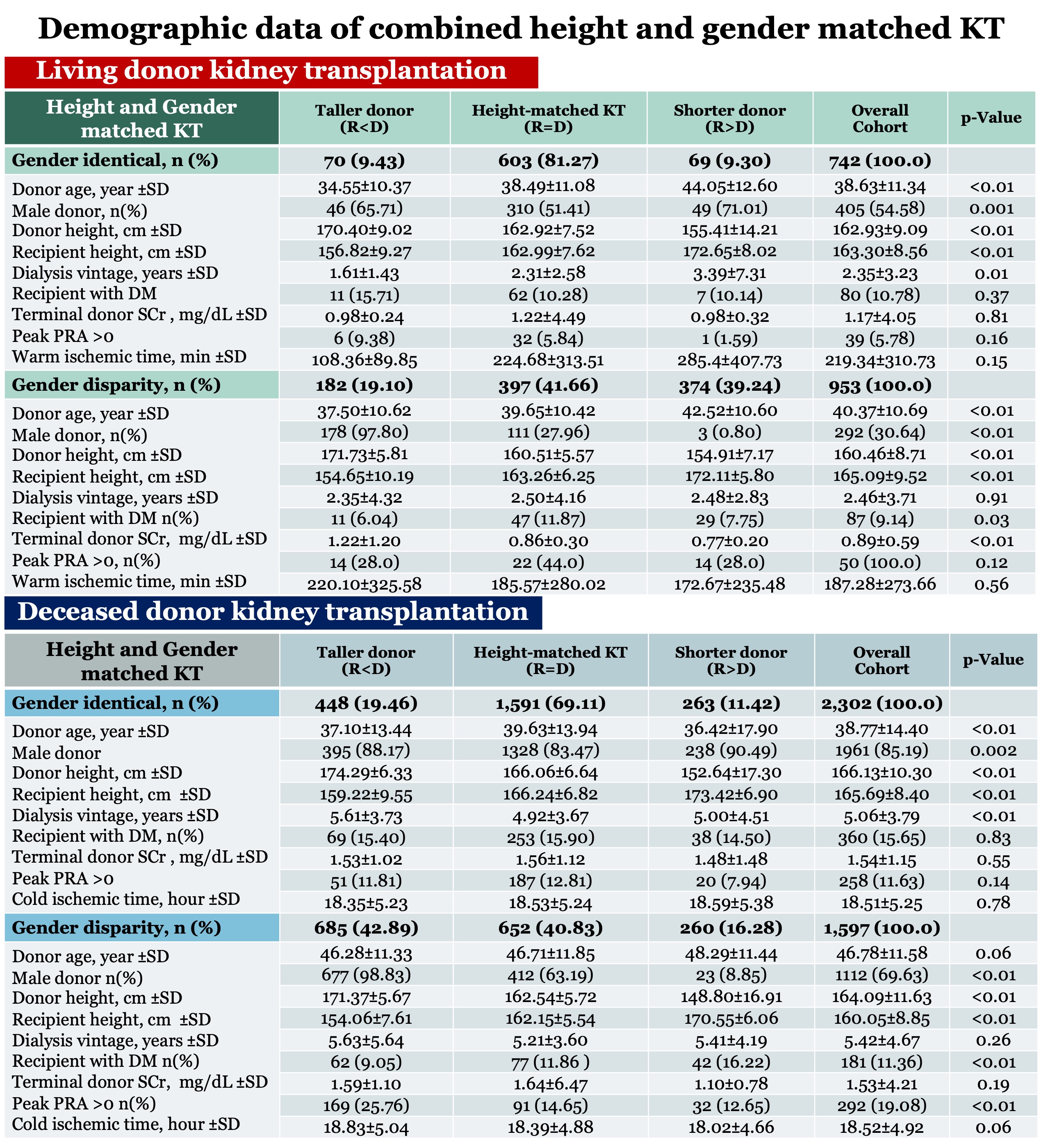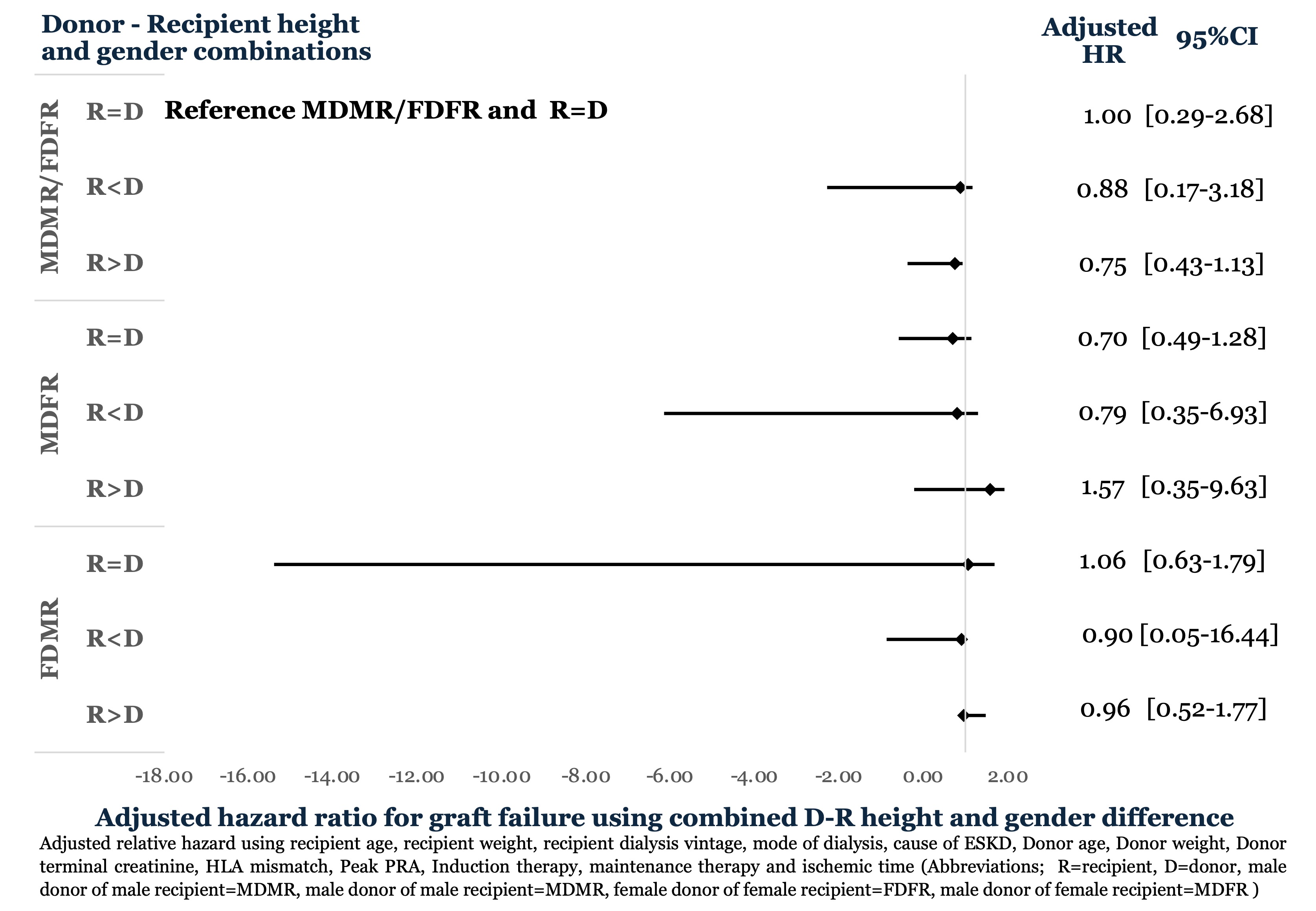The temporal and long-term impact of combined donor-recipient height and gender mismatch on allograft outcome after kidney transplantation in Thailand: an analysis of the national transplant registry
Chumpol Santisiripat1, Korntip Phonphok 1.
1Division of Nephrology, Department of Internal Medicine, Rajavithi Hospital , Bangkok, Thailand
Introduction Kidney transplantation (KT) is considered the optimum treatment in patients with end stage kidney disease. Earlier studies proposed an inferior graft outcome following KT among recipients of smaller donor kidneys, particularly female donor (D) of male recipient (R). Given the strong correlation between body height and kidney morphology, with an additive effect of gender. We hypothesized that KT of combined D-R height and gender mismatch would be associated with poor short- and long-term death-censored graft survival.
Method Data from the Thai Transplant Registry were analyzed. Adult patients ≥18 years underwent living and deceased donor KT (LDKT and DDKT) between 1987 and 2021, with available combination of D-R height and gender data, were included. D-R height parings were stratified into 3 groups based on a 10-centimeter (cm) difference (R<D, R=D and R>D), of these, each group was further subdivided into gender identical (male donor to male recipient; MDMR, female donor to female recipient; FDFR) and gender disparity (male donor to female recipient; MDFR, female donor to male recipient; FDMR), resulting in 12 height and gender combinations. Identical gender (MDMR and FDFR) with R=D was served as the reference. 1-, 5-, and 10-year Death-censored graft survival (DCGS) following KT were evaluated using Kaplan-Meier survival analysis. Multivariate cox proportional hazard models were also implemented to examine the correlation after adjusting for donor, recipient, and transplant or immunologic predictors of graft survival. This study was approved and funded by Rajavithi Hospital ethics committee.

Results A total of 5,594 kidney transplant recipients, with 1,695 being LDKT and 3,899 being DDKT. 1-year, 5-year, and 10-year DCGS were comparable among groups of combined D-R height and gender mismatch undergoing LDKT and DDKT. Multivariate Cox regression analyses did not exhibit significant association in all subgroups after adjustment of confounding covariates.

Conclusion Combined D-R height and gender mismatch was not associated with short- and long-term death-censored graft survival among living and deceased donor KT population. To determine favorable graft outcome, donor kidneys should not be rejected based on height and gender difference, particularly in DDKT.
The authors would like to thank all kidney transplant centers in Thailand for data contribution to the Thai Transplant Registry. This study was approved and funded by Rajavithi Hospital ethics committee.
[1] Height mismatch
[2] Gender mismatch
[3] Death-censored graft survival
[4] Kidney transplantation
